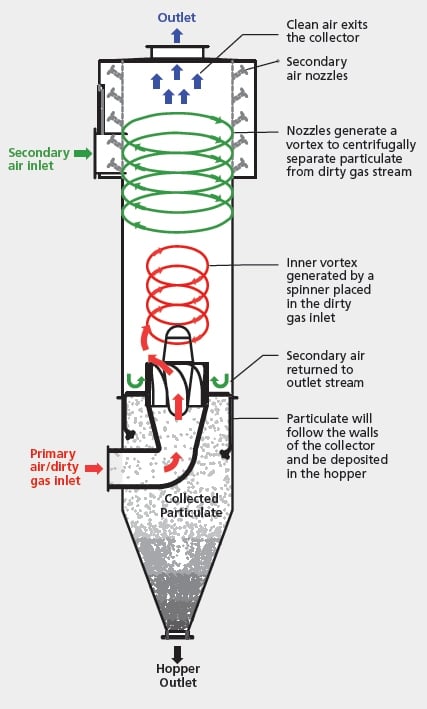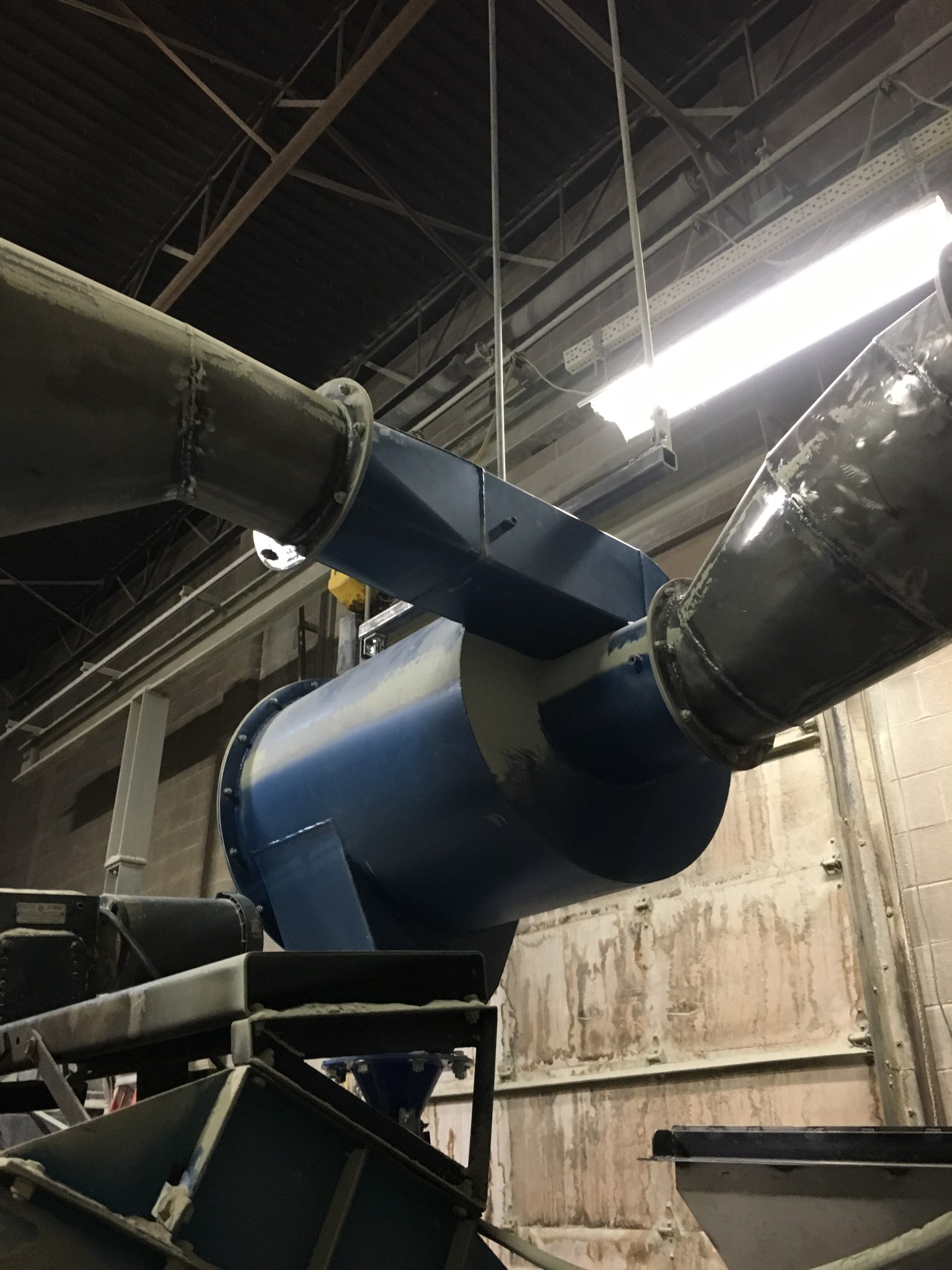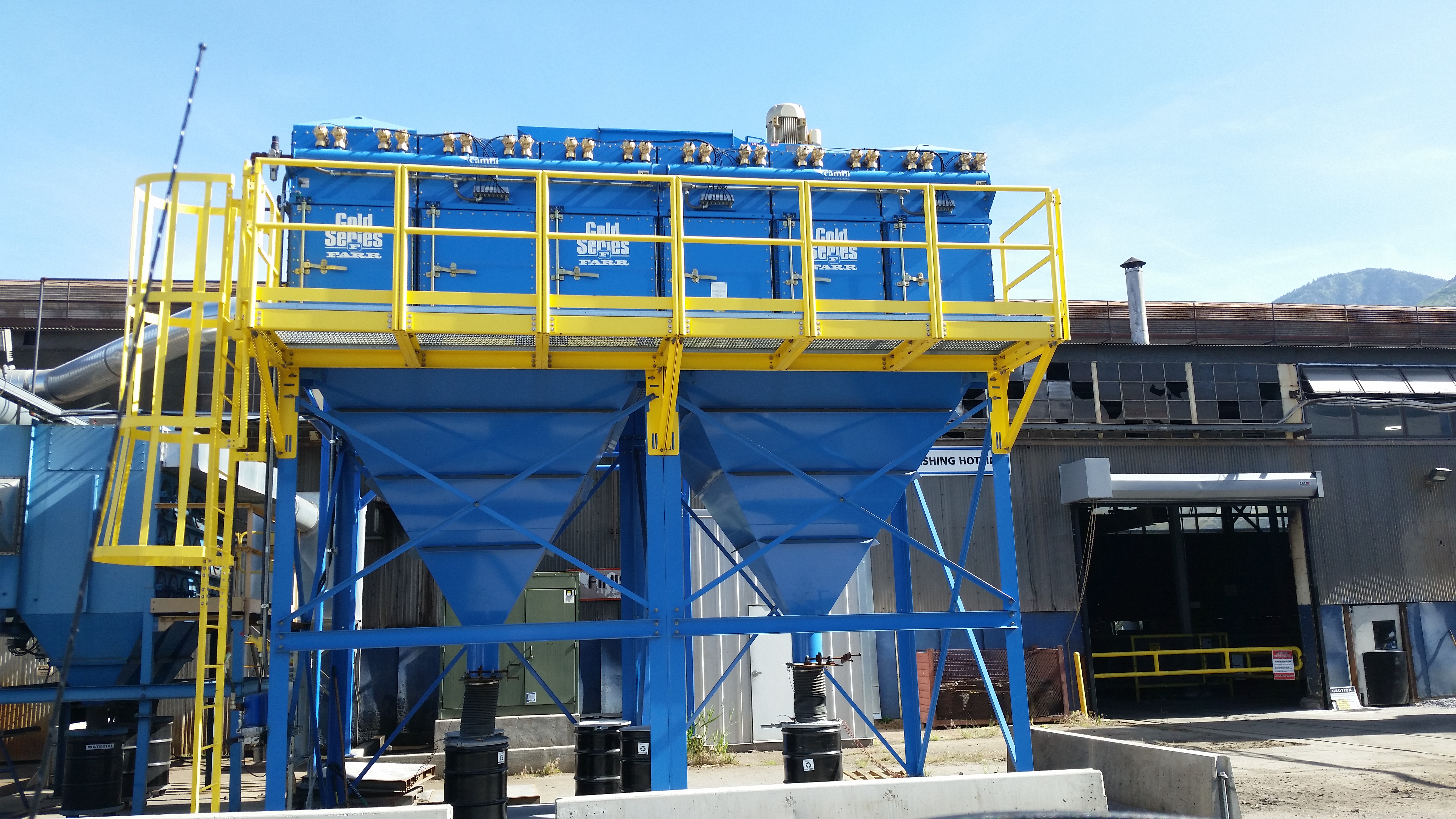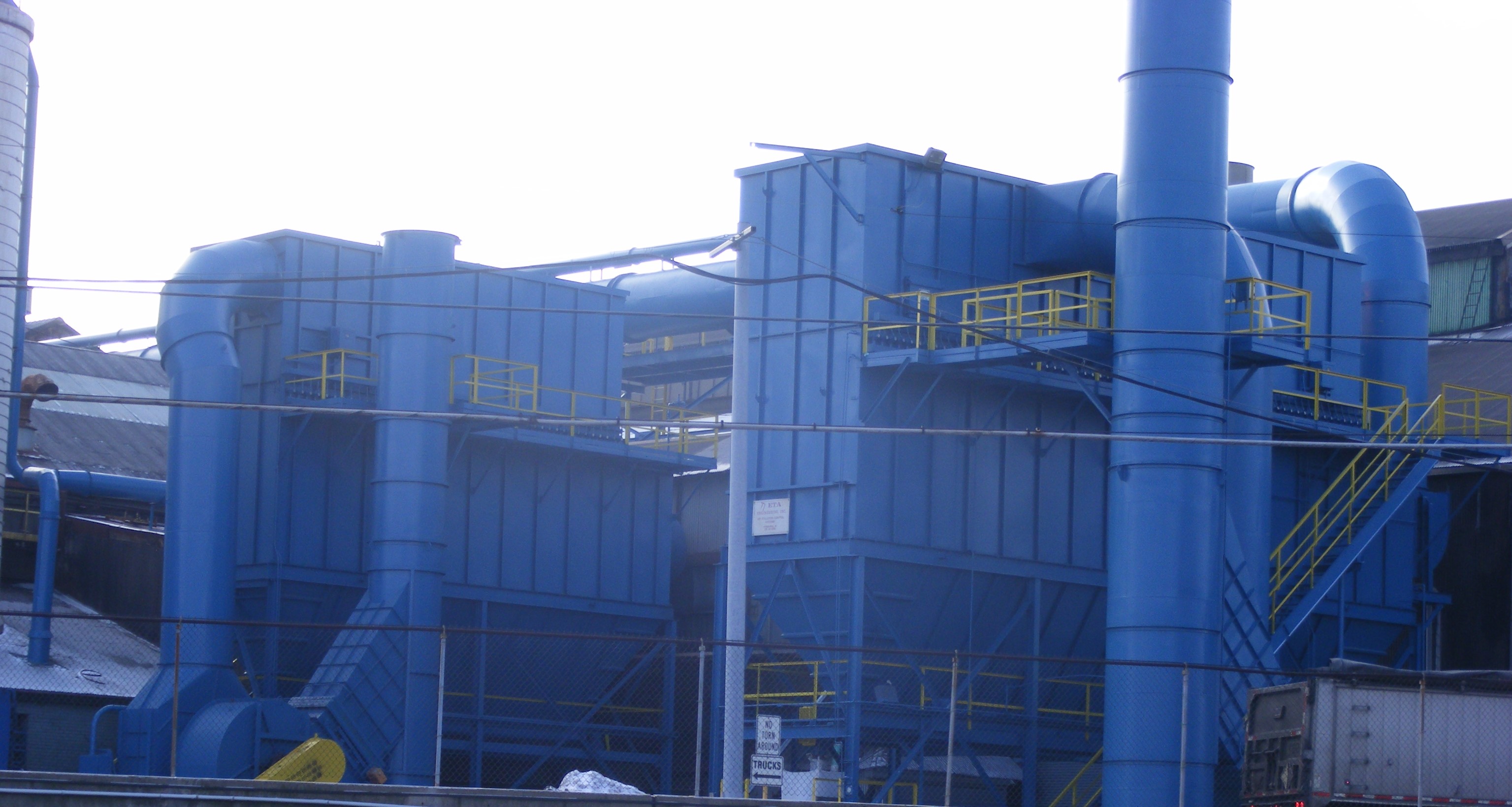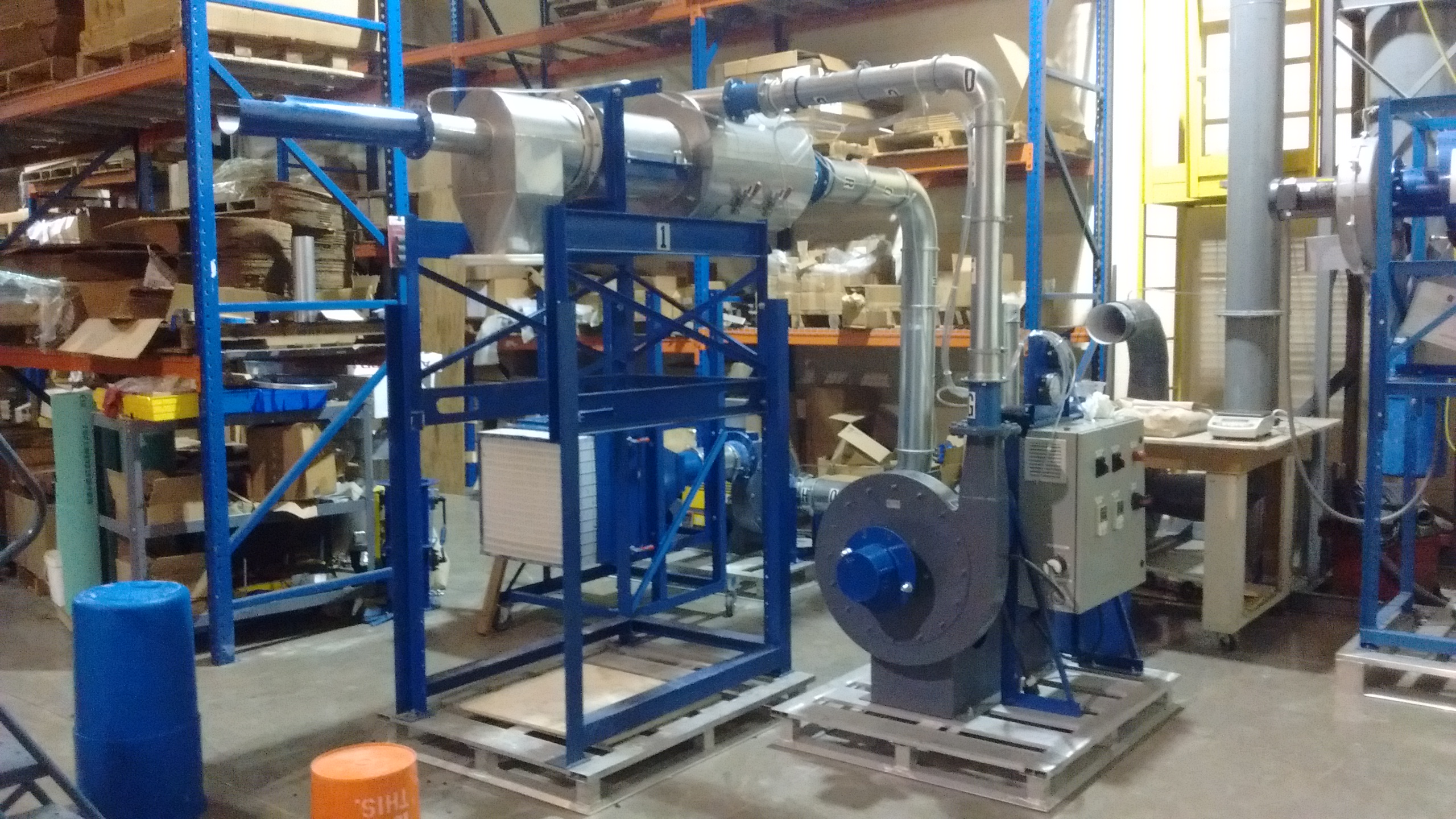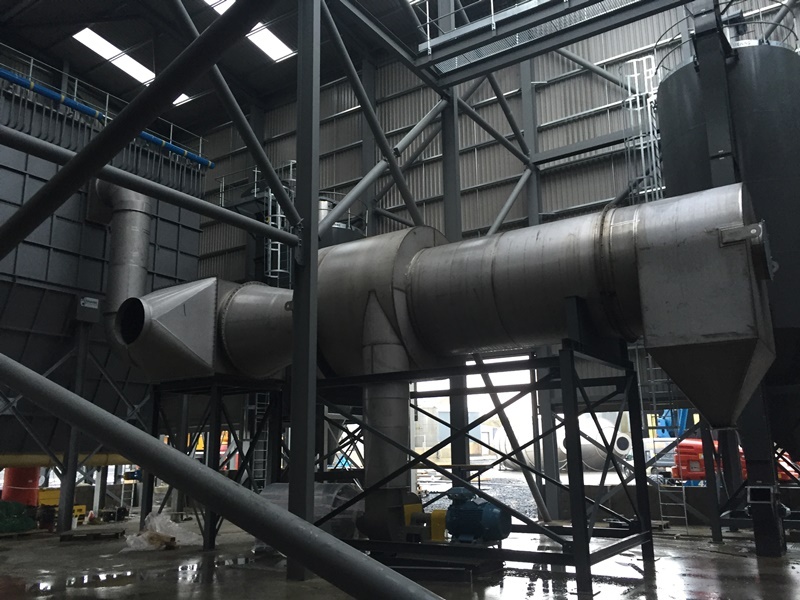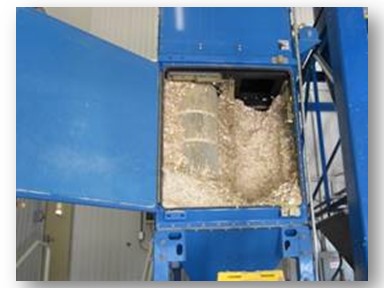Dust collection is often one step in a series of steps used to treat an airstream or process stream. Often times the airstream will require heating or cooling, gas scrubbing, and/or dilution of gas stream, etc. All of these processes usually require additional equipment to work in tandem with the basic dust collector. Adding additional equipment is not only expensive, but it consumes floor space and often purchasing new equipment will get overlooked simply due to lack of space to accommodate it.
Standard dust collectors often have operational issues with abrasive, sticky, and fibrous dusts. Standard pre-filters for these applications can have high maintenance costs, however without a pre-filter the particulate will often foul or erode the process equipment. Sticky dust will plug filters and foul heat exchangers. Abrasive dust will prematurely wear heat exchangers and dust collectors. Fibrous dust will foul in tight areas. Wet scrubber applications can experience higher water usage when the particulate amount increases.
There are 5 applications that utilize standard dust collectors:
1. Temperature Adjustment of an AirstreamThe SplitStream cyclone uses a secondary airstream to convey the dust from the walls of the cyclone down into the hopper for dust collection. The secondary airstream can be used to heat or cool the primary airstream before it is vented outside or fed to other process equipment. The two airstreams will combine in the cyclone and they will leave together at a uniform temperature.
2. Abrasive Dust
Abrasive dust will shorten process equipment’s life span by eroding away the walls of the equipment. Due to the design of a standard cyclone, the lifespan is shortened quicker. A standard cyclone is designed so that the dust is conveyed to the outside of the cyclone, where it hits the walls and fall into the hopper. Abrasive dust will also wear out filter bags, the inlet distributor, tube sheets, and the baghouse walls.
3. Sticky and Hygroscopic Dust
Sticky and hygroscopic dust can also cause issues with standard dust collectors and cyclones. Sticky dust will accumulate in any dead zones in standard cyclone. This causes a gradual reduction in the internal volume of the cyclone, and changes the geometry of the cyclone, which could cause a change in the removal efficiency of the unit.
4. Fibrous Dust
Fibrous dust causes many issues for standard dust collectors. The fibrous dust floats in the airstream and often will be re-entrained back in to the air exiting the cyclone. In baghouses and cartridge collectors, fibrous dust when cleaned off the filters, will float in the dirty air plenum. This increases the concentration of the dust in the unit. The dust will not settle into the hopper to be removed from the system. Overtime this will cause the dirty air plenum to plug up, thereby plugging up the dust collector.
5. Oxygen Reduction
Many dusts are explosive and with growing scrutiny of new and existing operations by inspectors and insurance companies, existing processes are being found that require explosion protection. One way of protecting from explosions is to prevent an explosion from ever occurring by lowering the oxygen level of the system below the Lower Explosive Level (LEL). This is done by adding an inert gas such as nitrogen to decrease the concentration of oxygen.
Aerodyne’s SplitStream cyclone offers a strong advantage over standard dust collectors. Coupled with its unique design and its ability to be configured multiple ways, it is the ideal dust collection solution. Whether it is using it as a pre-filter for an existing system or replacing a faulty dust collector in a plant, the SplitStream will reduce maintenance, increase efficiencies, and improve the overall process.
To learn more about which dust collector, please contact our experts at 440-543-7400 or visit our website: www.dustcollectorhq.com.
To improve efficiency and safety, there is no substitute for an on-site inspection by an experienced expert. Click below to start with a free 20-minute phone consultation by clicking the button.

